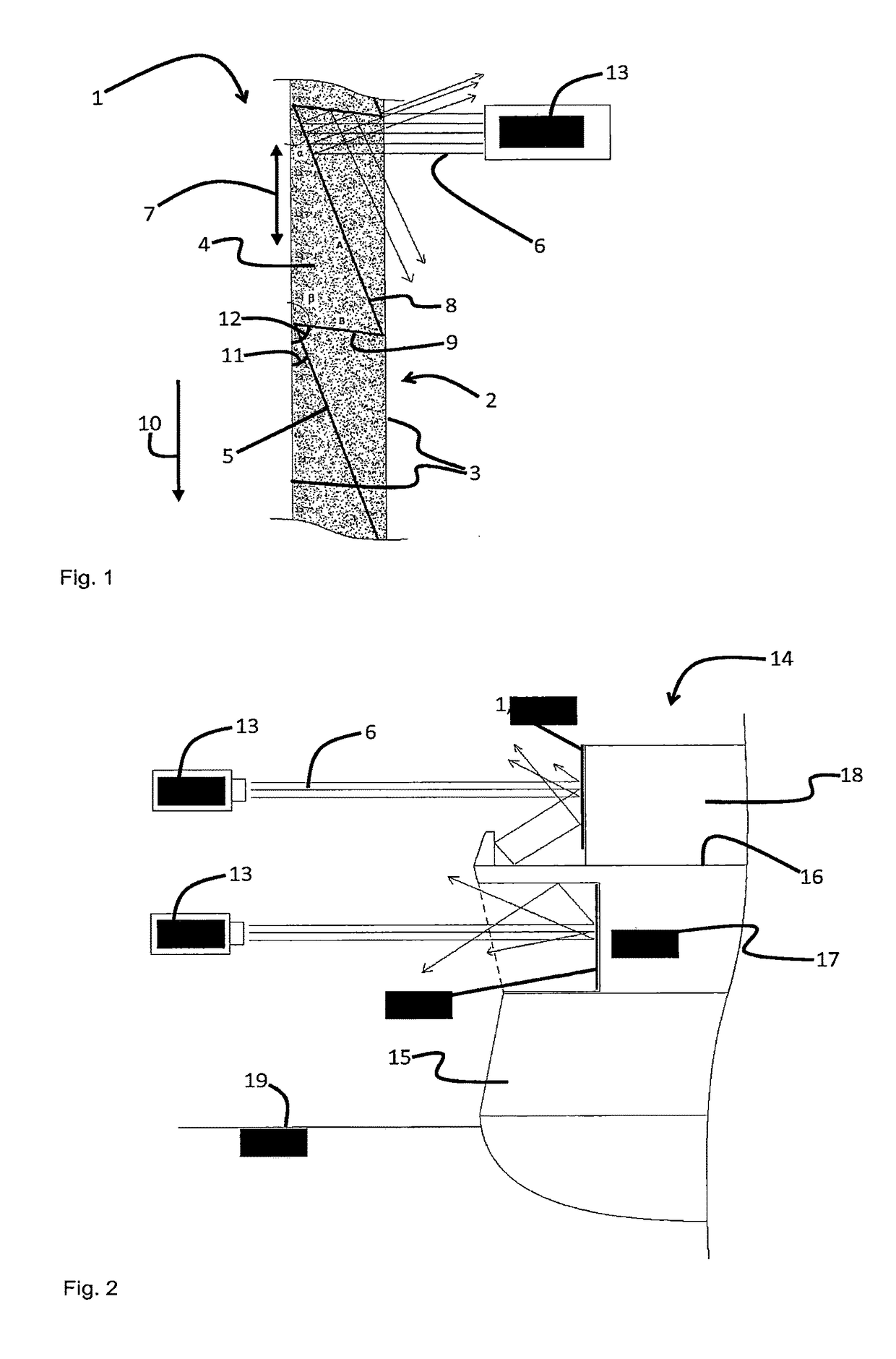Device for reducing effective radar cross section
a technology for effective radar and cross section, which is applied in special-purpose vessels, offensive equipment, transportation and packaging, etc., can solve the problems of making radar detection more difficult, and reducing so as to reduce the effective radar cross section (rcs) of naval vessels, low space requirement, and low weight
- Summary
- Abstract
- Description
- Claims
- Application Information
AI Technical Summary
Benefits of technology
Problems solved by technology
Method used
Image
Examples
Embodiment Construction
[0017]In the various figures, the same parts are always provided with the same designations, and are therefore in each case also generally only referred to or mentioned once.
[0018]In FIG. 1, a schematic view of a sectional image of a device 1 for reducing the effective radar cross section (RCS) of a naval vessel 14 according to an exemplary embodiment of the present disclosure is represented.
[0019]The device 1 comprises a cladding panel 2, which takes the form of a rigid or semirigid sandwich panel. For this, the cladding panel 2 comprises two outer layers 3 of glass-fibre reinforced plastic (GRP) and a core 4, which is arranged between the two outer layers 3. The core 4 comprises a foam core, preferably a polyurethane foam (PU). The composite of the outer layers 3 with the foam core provides the cladding panel 2 with a high load-bearing capacity and great stiffness, with at the same time very low weight. Moreover, the cladding panel 2 is permeable to radar beams 6, so that no appre...
PUM
 Login to View More
Login to View More Abstract
Description
Claims
Application Information
 Login to View More
Login to View More - R&D
- Intellectual Property
- Life Sciences
- Materials
- Tech Scout
- Unparalleled Data Quality
- Higher Quality Content
- 60% Fewer Hallucinations
Browse by: Latest US Patents, China's latest patents, Technical Efficacy Thesaurus, Application Domain, Technology Topic, Popular Technical Reports.
© 2025 PatSnap. All rights reserved.Legal|Privacy policy|Modern Slavery Act Transparency Statement|Sitemap|About US| Contact US: help@patsnap.com

